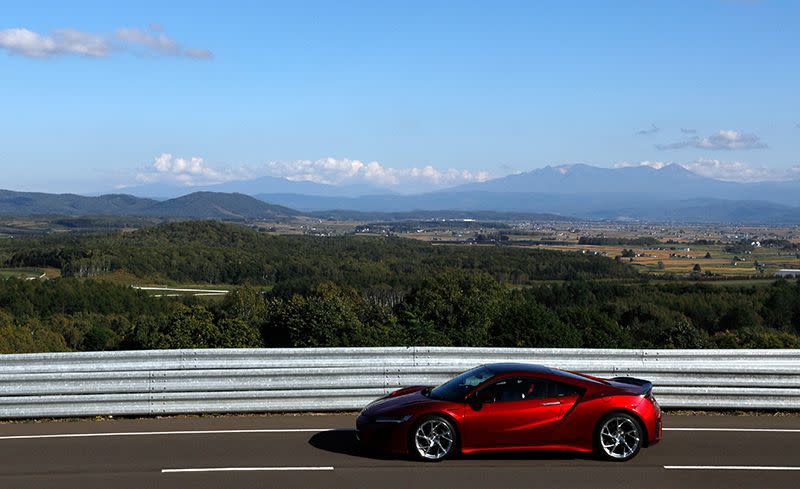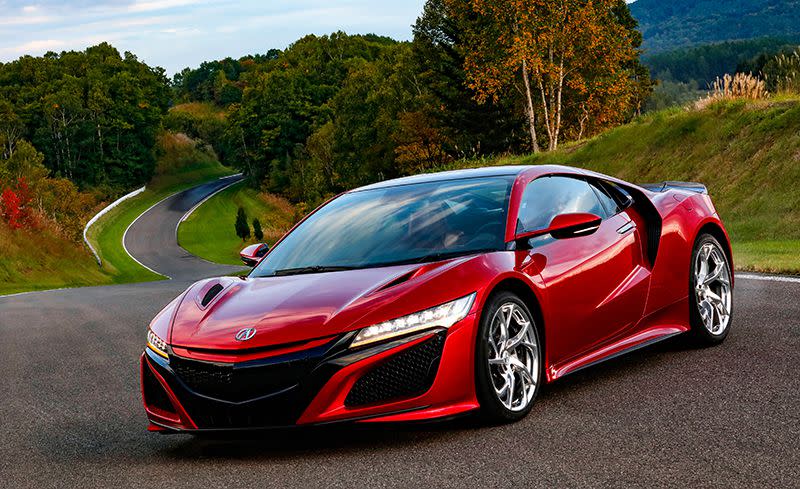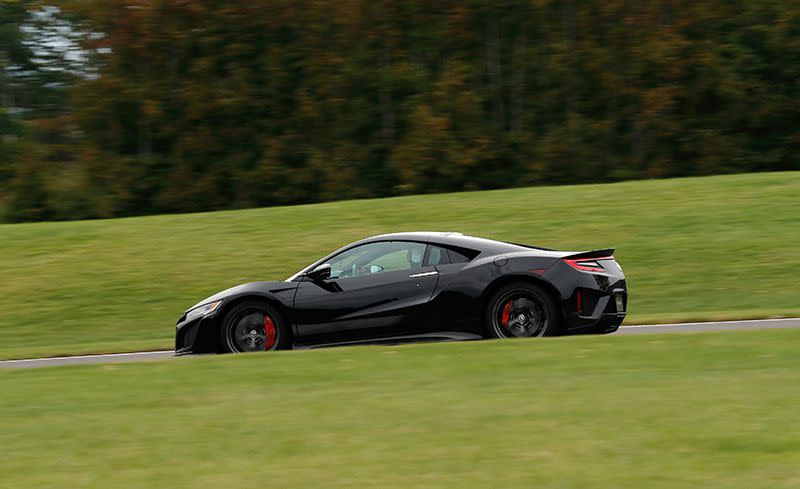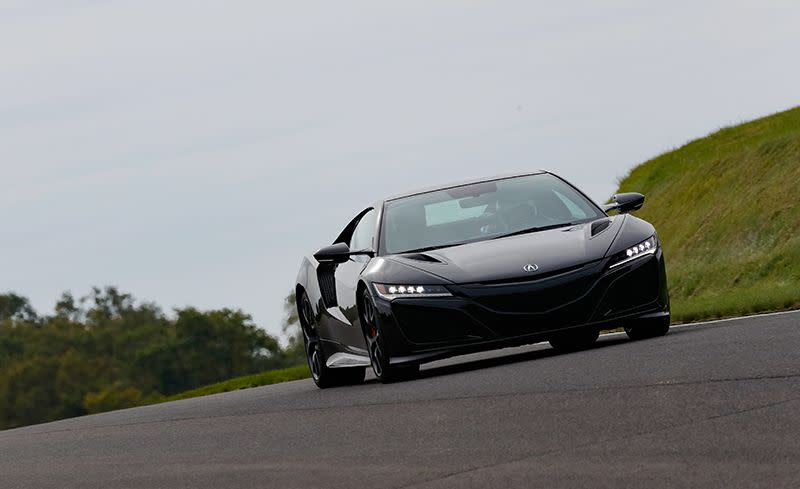The 2019 Acura NSX Remains Polite to a Fault
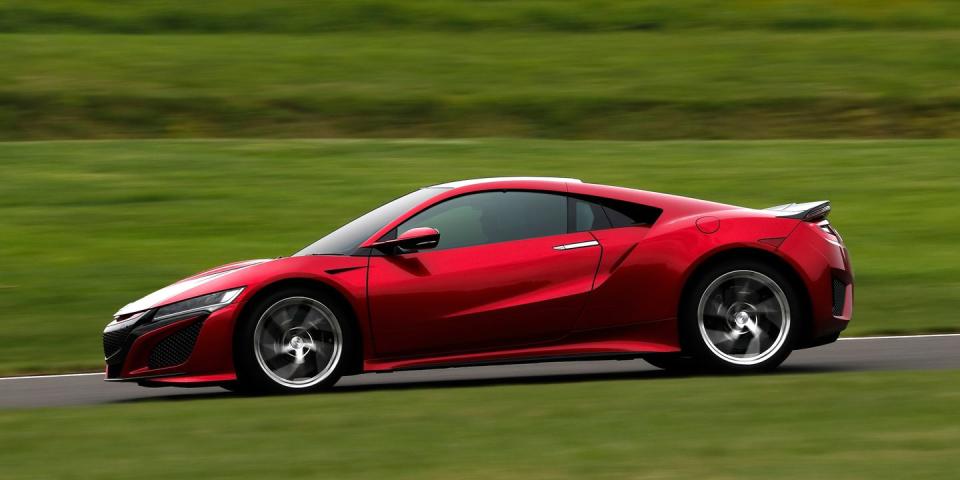
Although Acura has no one to blame but itself for not evolving the NSX consistently since the now 28-year-old pioneering original, it still seems slightly unfair that every discussion of the revived second-generation of its mid-engine supercar is colored so intensely by the old car. When Ferrari rolled out its 488GTB, after all, there was no deep dissection of how it compares to its early 1990s contemporary, the 348. But, without continual change, the world is right to wrestle with the question of what a modern NSX should be, even if the old-versus-new comparison is an impossible one. Although there is one thing that carries over from the original-the Berlina Black paint color-the forward view in a mid-engine supercar will probably never be so panoramic again, A-pillars will never again be so spindly, and the cowl so low. Nor will a supercar ever again come with a mechanical odometer or a tape deck. Get over it. If you like the original NSX so much, buy one. (This writer does, and did just that.)
At best, the supercar-buying public seems to be confused by this latest hybridized rendition of the NSX and, at worst, underwhelmed. In the two years it's been on sale, Acura has moved just under 1000 units in the United States, less than a quarter of the number of 1991 and 1992 models sold. Today what's flying off of shelves four-times faster are the McLaren 570S and 570GT.
To show off the small changes made to the NSX for 2019, Acura ferried us, and a couple of Ohio-built 2019 NSXs, the nearly 6000 miles to Japan's rural northernmost Hokkaido prefecture to sample them at its Takasu Proving Grounds. There, Honda tests everything from supercars to snow blowers and lawn mowers (while we were there, a few Miimos were autonomously cutting the grass). The venue was appropriate because, while initial development was led out of Ohio, the baton was passed to a Japan-based team for the 2019 facelift.
The 2000-acre Takasu facility was completed in 1993, and some final tuning on the original car happened here during construction. Among its collection of roads are exacting replicas of European and U.S. roadways. After a switch from driving on the left to the right as you enter the U.S. section, there are copies of roads surrounding Honda's American headquarters in Torrance, California, created to make sure there's no surprise feedback from the test drives of U.S.-based executives.
Changes for 2019
The most significant mechanical change is a new standard Continental SportContact 6 tire that replaces the ContiSportContact 5P in the same 245/35ZR-19 front and 305/30ZR-20 rear sizes. It's the same tire that helped the Civic Type R deliver a new front-drive record at this year's Lighting Lap competition and a heady 1.02 g on the skidpad. The other chassis changes-stiffer anti-roll bars front and rear, and stiffer rear toe-link bushings-were done to match the new tire, according to the chassis tuning lead engineer Massafumi Inoue. He also readily admits that this far grippier tire-he estimates the improvement at roughly 15 percent-is almost solely responsible for Acura's claim that the revised NSX is two-seconds-a-lap quicker around the Honda-owned Suzuka F1 track. That's where F1 legend Ayrton Senna danced his loafers on the three pedals of the original NSX before convincing the engineers to add a couple additional stiffening braces. However, the 2019 car is unlikely to be any quicker than before when wearing dealer-installed Pirelli P Zero Trofeo R track rubber, like our 2016 Lightning Lap car did, an option that remains available.
There are a few cosmetic tweaks, too, such as a new blinding orange color, available orange-painted calipers for the $9900 carbon-ceramic brakes, and a switch to body color around the top edge of the grille. That last change sounds small, but it really works to further de-beak the front end, particularly in the darker colors. Inside, there's now a red full-leather option, as well as a blue leather-and-suede combo.
One thing that needed changing is the infotainment, which has been improving rapidly within the Honda ranks lately with quicker-responding touchscreens, sharper graphics, and volume and tuning knobs added back into the mix. But the 2019 NSX gets none of that, nor the new True Touchpad system from the 2019 RDX, instead soldiering on with its outdated Civic-grade system.
Honda's Mini Nürburgring
Inspired by the Nürburgring, the Winding Course at Takasu rises and falls 200 feet over its 3.9 miles. It's a caricature of a race track, with repeated dramatic mid-corner undulations there seemingly to induce maximum unsettlement right at the apex where you don't want it. Given the hairiness of this track, you can almost forgive the engineers for tuning the NSX to be so benign and forgiving. It simply can't be unsettled, even through the most extreme sections where the front end catches a little air, causing a dramatic collision of our helmet with the headliner and a big scrape from the front air dam as the NSX returns all four tires to the road.
But that doesn't make it very fun. Had we instead unleashed tail-happy McLaren 570 models here, someone almost certainly would've spun one into the trees (which, insanely, were brought over from Germany to complete the authenticity of the Nürburgring inspiration). But isn't being a bit of a handful part of supercar lore? The first-gen car was docile when driven gently, but it came alive when the revs and the g's increased. In fact, this very publication spun two of them off the road, tail first, in our first two comparison tests (both of which it won). Confusingly, Inoue, the chassis engineer, said they tuned in more rear-end stability for 2019, something we think the car definitely didn't need. Disappointingly, at the limit the NSX always heads for understeer, and we never once felt signs of life from the rear end.
When a new NSX whizzes by, the 75-degree V-6 emits an exotic timbre, but one that's far too muted and polite. The dominant sound inside is intake honk, an NSX tradition dating back to the original, although most of the noise on the second-generation car comes through a sound tube plumbed into the cabin with a butterfly valve to control the amount of noise it passes.
Some additional heft has been added to the steering, although the efforts are still on the light side, even in Track mode. But even at low speeds, the helm in the 2019 model feels slightly sharper just off center, which is probably due to the new tires. And for a by-wire setup, the brake-pedal effort and feel is impressively pure during max-attack driving, and there's no hybrid regen funkiness. The seats are more relaxed-fit than the supercar norm, but still do an admirable job of holding the driver in place (on the mixed-material seats, the suede inserts help). At low-to-moderate cornering speeds of up to about 75 mph, you can really feel the electric motors yanking the front end out of corners. The DCT gearbox shifts quickly but-sticking with the theme-extremely smoothly and nearly seamlessly. Even in Track mode, when paddle shifting you can't elicit anything with even a semblance of an edge to it.
This hybrid setup feels like the way of the supercar future that others are set to follow. And it's endlessly impressive just how seamlessly the engineers have managed to integrate three electric motors, a twin-turbo V-6, and a nine-speed dual-clutch automatic into this mid-engine architecture. In fact, listening to the team articulate its goals, they have very exactly rendered the car they intended to build. It's easy to live with, and ultra-friendly and approachable to drive. But it remains more technically and intellectually stimulating than it is emotionally.
('You Might Also Like',)

 Yahoo Autos
Yahoo Autos 